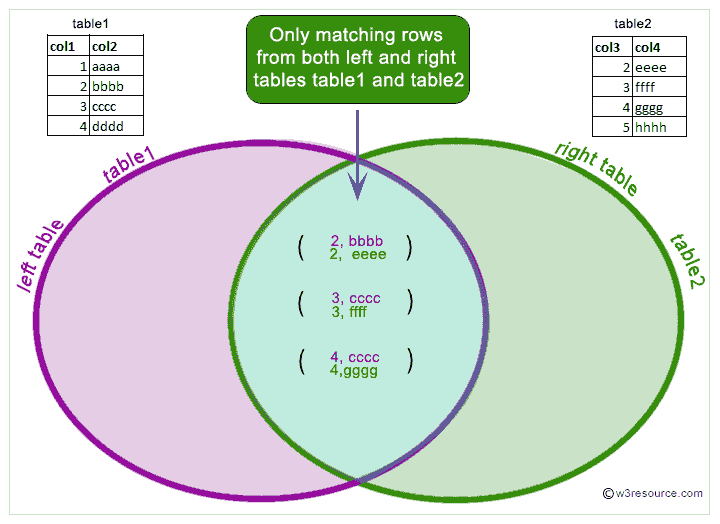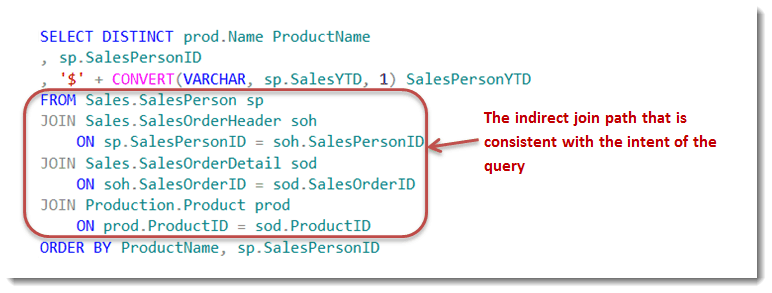MySQL Multiple Joins in one query? Ask Question Asked years, months ago. Browse other questions tagged mysql sql join or ask your own question. Blog CROKAGE: A New Way to Search Stack Overflow.
How to use multiple LEFT JOINs in SQL? SQL Inner Join Example : I have already written article on SQL joins with multiple examples. A SQL JOIN combines records from two tables. A JOIN locates related column values in the two tables.
A query can contain zero, one, or multiple JOIN operations. However, you often want to query data from multiple tables to have a complete result set for analysis. To query data from multiple tables you use join statements.

SQL provides several types of joins such as inner join , outer joins ( left outer join or left join , right outer join or right join , and full outer join ) and self join. There are types of joins in the MySQL: inner join and outer join. The difference is outer join keeps nullable values and inner join filters it out. How To Inner Join Multiple Tables.
I want to select all students and their courses. Sometimes you ponder which SQL syntax to use to combine data that spans over multiple tables. JOIN is a syntax often used to combine and consolidate one or more tables. Tables are joined two at a time making a new table which contains all possible combinations of rows from the original two tables.
Queries with multiple joins like this one often lead to confusion. In this article, I will show a productive way of looking at multiple - join queries that makes questions like the one above melt away. Summary: in this tutorial, you will learn about the SQL Server LEFT JOIN clause and how to use it to query data from multiple tables.
Introduction to SQL Server LEFT JOIN clause. The LEFT JOIN clause allows you to query data from multiple tables. It returns all rows from the left table and the matching rows from the right table. If no matching rows found in the right table, NULL are used. SQL provides many kinds of joins such as inner join , left join , right join , full outer join , etc.
This tutorial focuses on the inner join. The inner join clause links two (or more) tables by a relationship between two columns. Whenever you use the inner join clause, you normally think about the intersection. SQL left join multiple tables are used to create interactive dashboards using SQL Queries.
SQL Left join is faster than the Inline view. So SQL left joins are used to improve performance of application. Example : You can refer same tables with following additional table for fetching data in tables. SQL uses “indexes” (essentially pre-defined joins) to speed up queries. This will be covered in greater detail the lesson on making queries run faster , but for all you need to know is that it can occasionally make your query run faster to join on multiple fields, even when it does not add to the accuracy of the query.

There are four basic types of SQL joins: inner, left, right, and full. The easiest and most intuitive way to explain the difference between these four types is by using a Venn diagram, which shows all possible logical relations between data sets. If both tables consistently have null in STATUS and DLV when EX contains a Y, then you can match the two columns sets using EXISTS and INTERSECT:. The SQL LEFT JOIN (specified with the keywords LEFT JOIN and ON) joins two tables and fetches all matching rows of two tables for which the SQL -expression is true, plus rows from the frist table that do not match any row in the second table. There are common identifiers in a couple of them between the four, but not across all four.
Frequently, this type of join involves primary and foreign key complements. Note: Equijoins are also called simple joins or innerjoins. Obtaining Data from Multiple Tables SELECT e. FROM emp e, dept d WHERE e. SQL’deki temel join sorguları üzerinde durmuştuk. O yazılarda anlatılan join’in en çok kullanılan türü olan inner join’di. I need way to roll-up multiple rows into one row and one column in SQL Server.
I know I can roll-up multiple rows into one row using Pivot, but I need all of the data concatenated into a single column in a single row.
Hiç yorum yok:
Yorum Gönder
Not: Yalnızca bu blogun üyesi yorum gönderebilir.